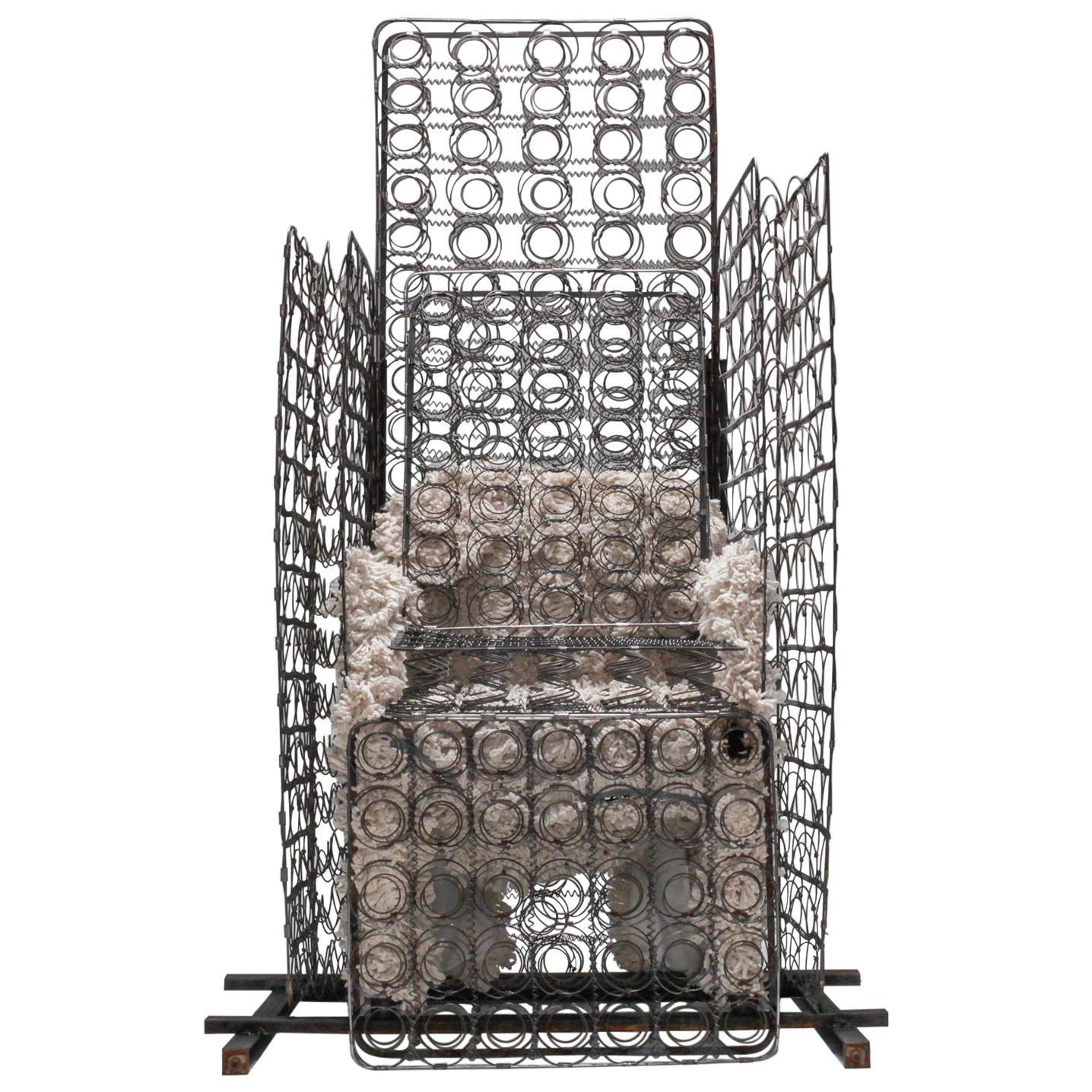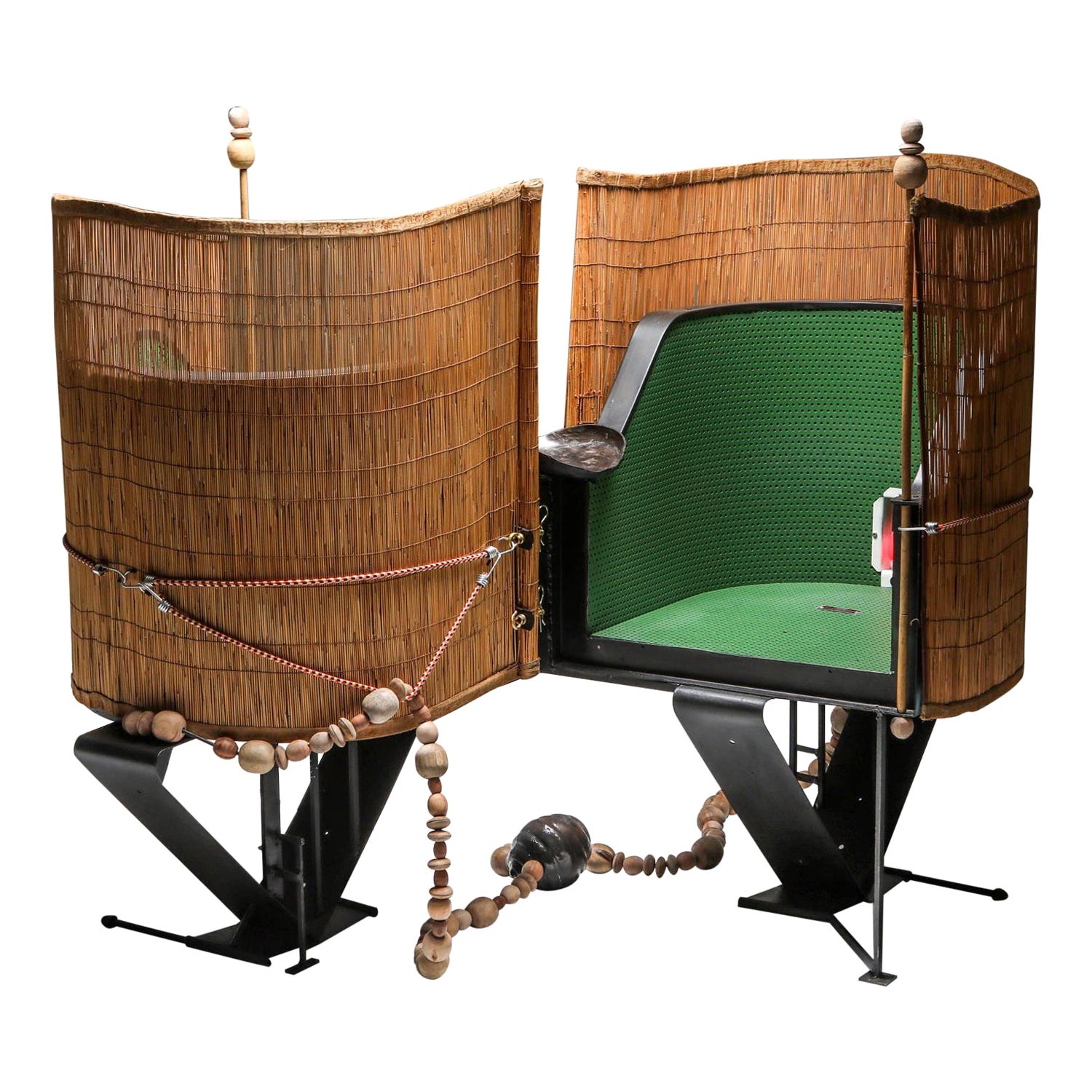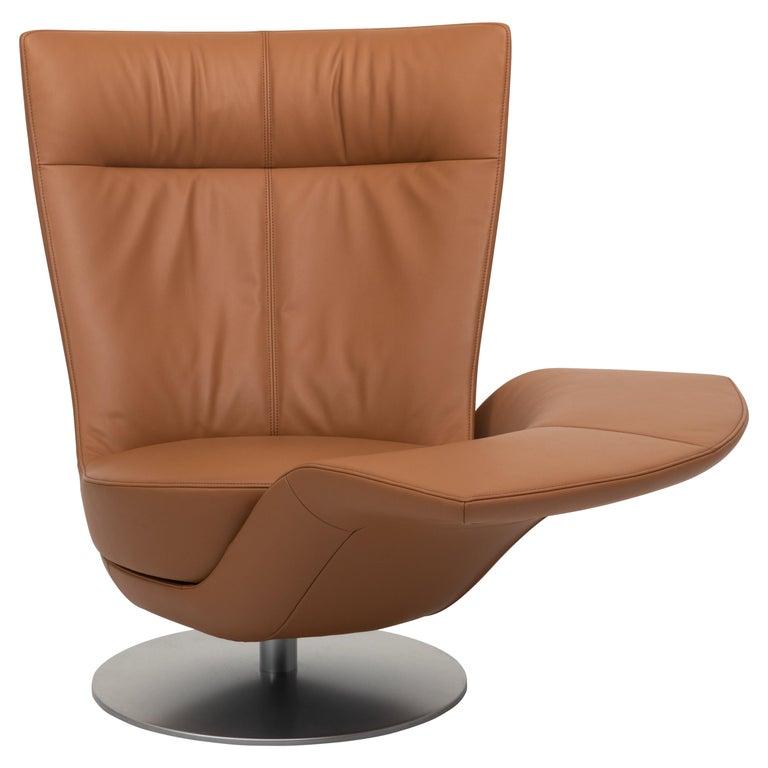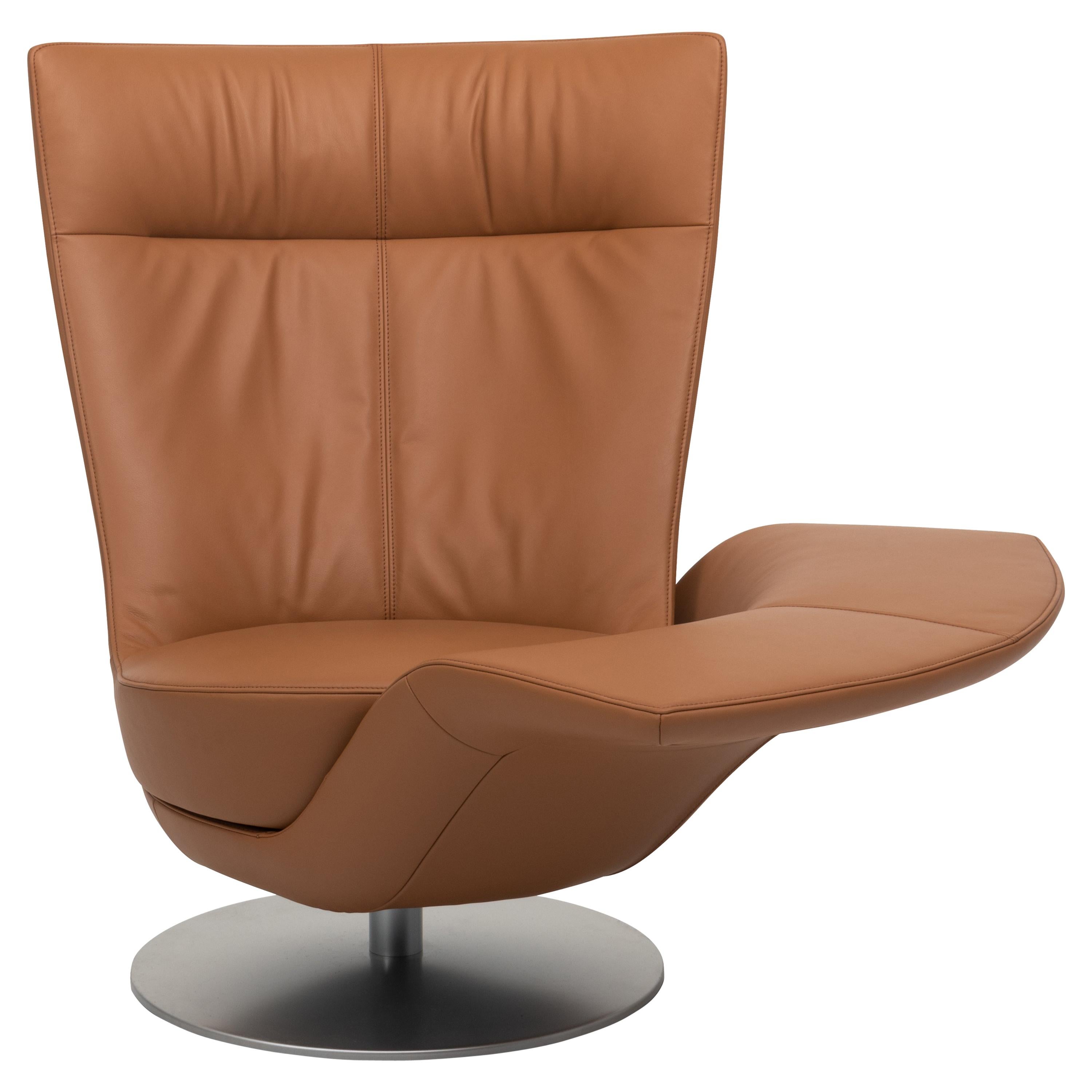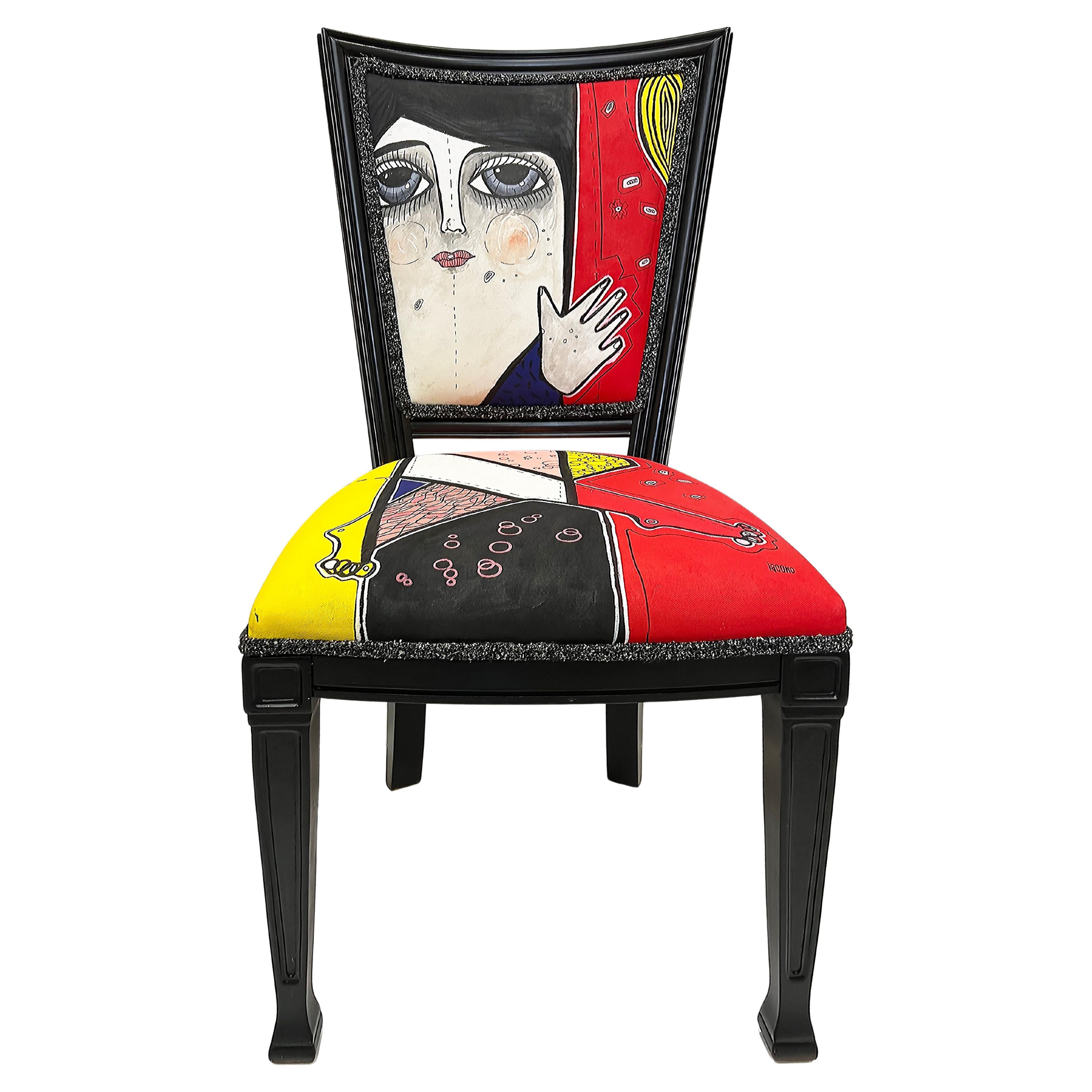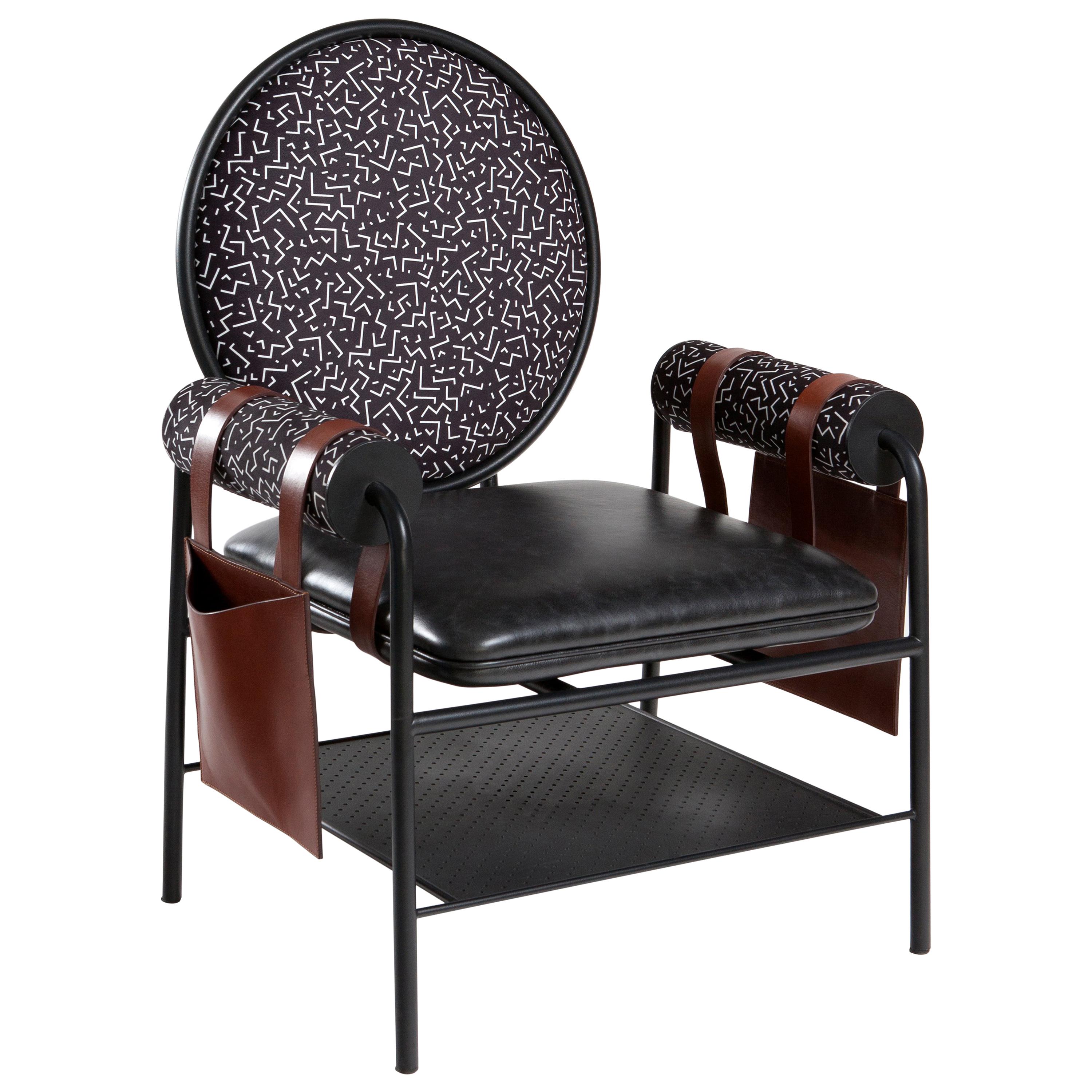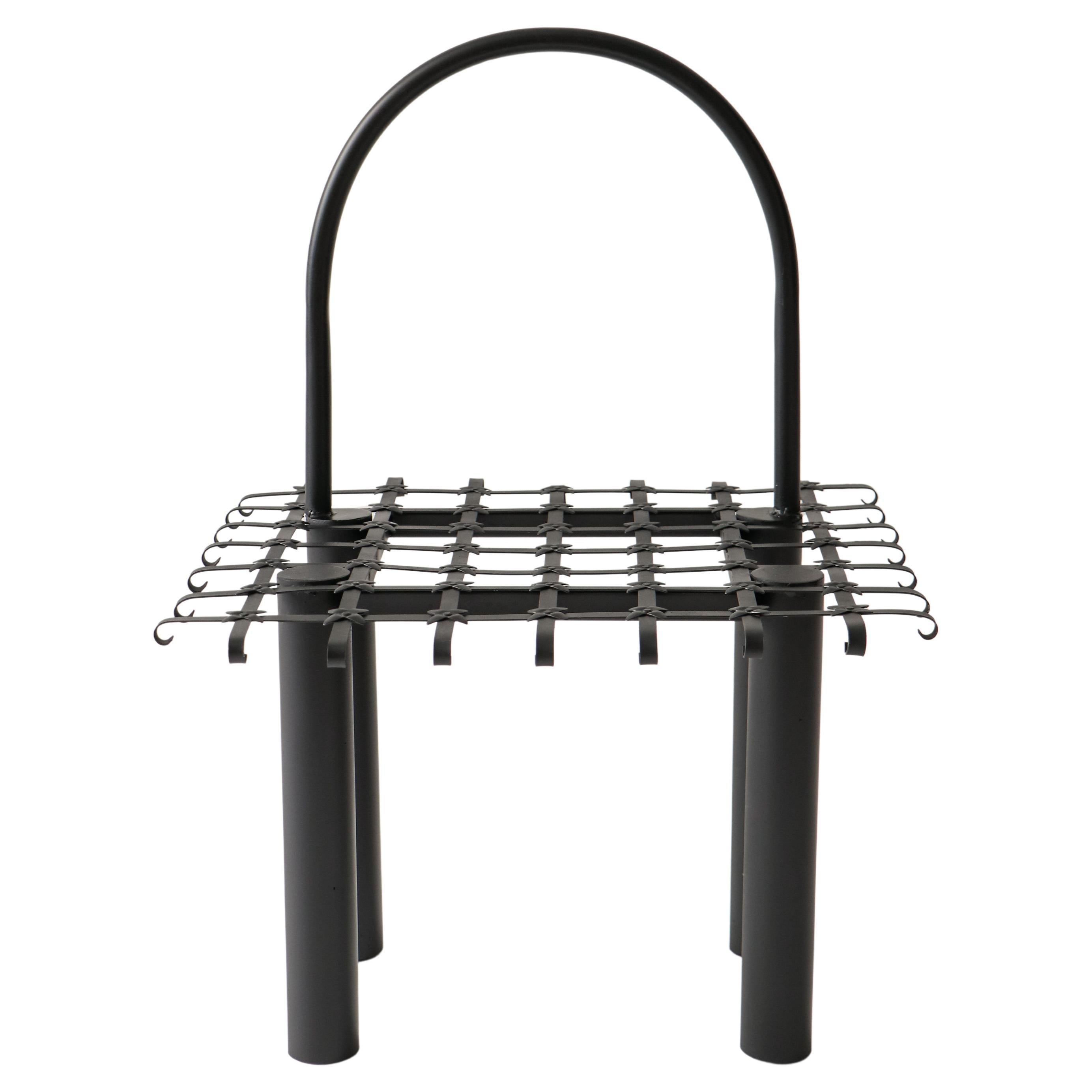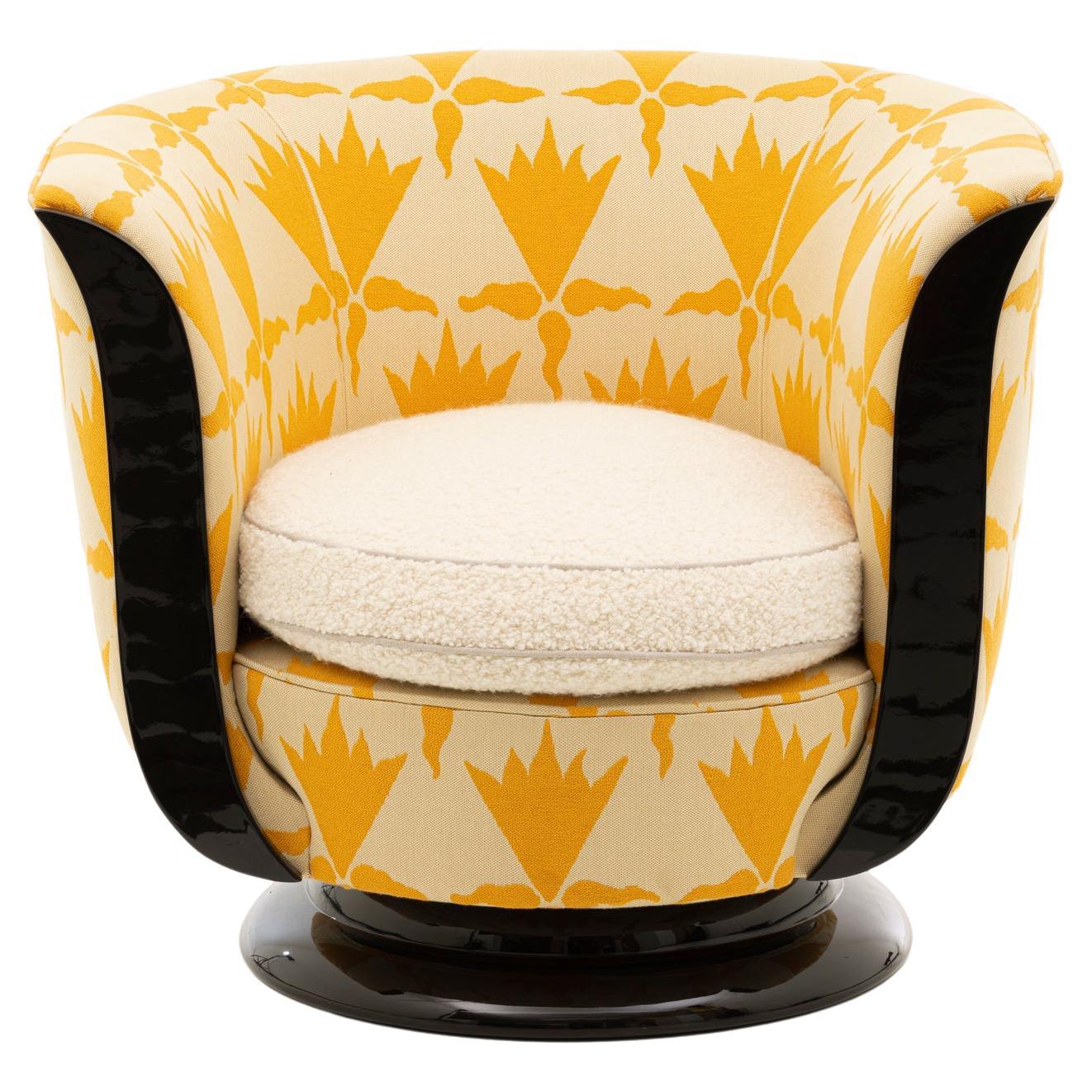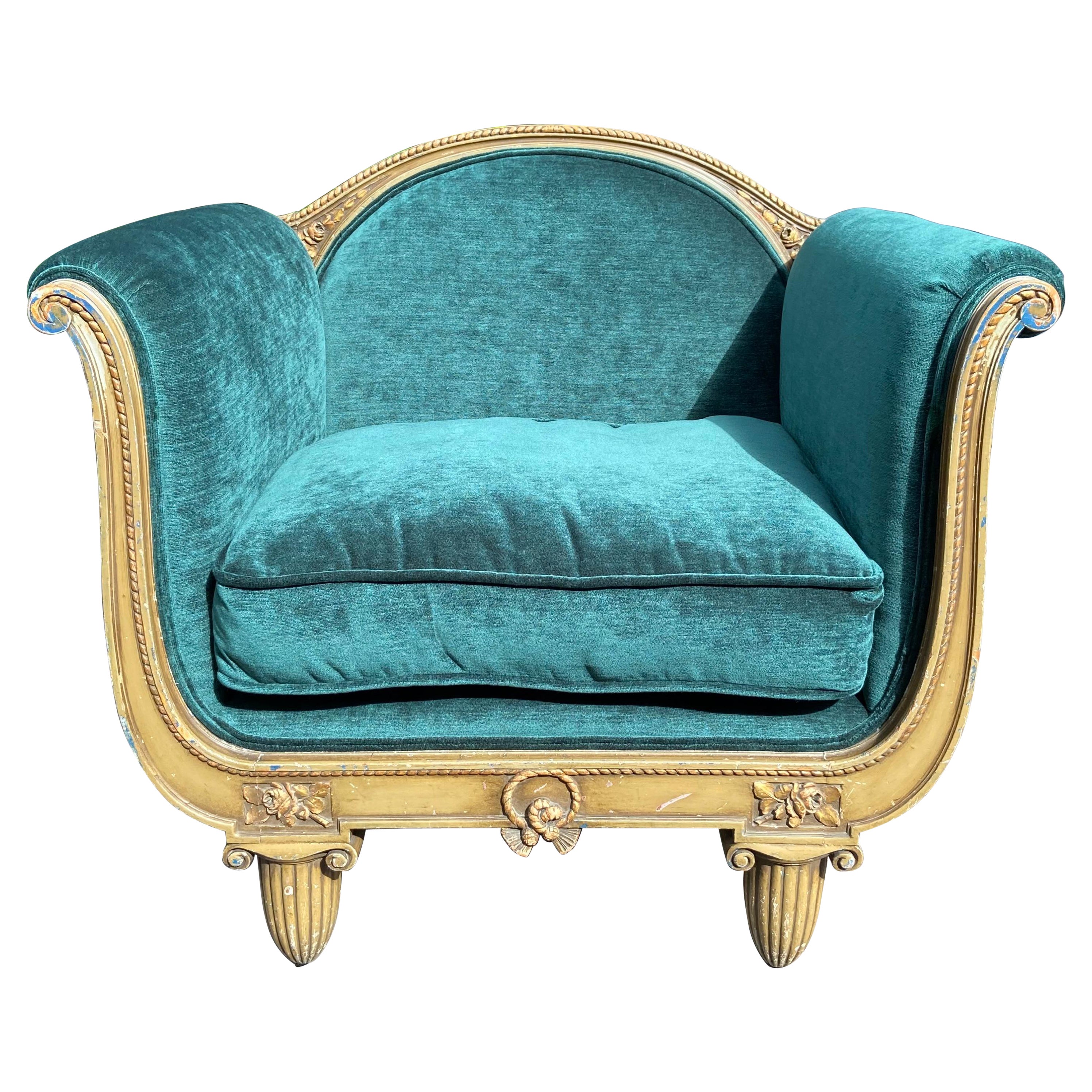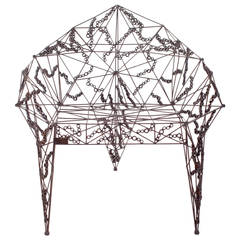
Baltasar Portillo "Mechanika" Functional Art Chair
View Similar Items
1 of 6
Baltasar Portillo "Mechanika" Functional Art Chair
About the Item
- Creator:Baltasar Portillo (Artist)
- Dimensions:Height: 35 in (88.9 cm)Width: 35 in (88.9 cm)Depth: 38 in (96.52 cm)Seat Height: 17 in (43.18 cm)
- Style:Modern (Of the Period)
- Place of Origin:
- Period:
- Date of Manufacture:2015
- Production Type:New & Custom(One of a Kind)
- Estimated Production Time:Available Now
- Condition:
- Seller Location:New York, NY
- Reference Number:1stDibs: LU80572290832
You May Also Like
- Functional Art Chair / Throne "'Spring Swab" by Lionel JadotBy Lionel JadotLocated in Antwerp, BECollectible design / Functional art, Lionel Jadot for Everyday Gallery, Belgium 2020 Born in Brussels in 1969, Lionel Jadot is an interior designer, artist, designer, filmmaker, adventurer. But all at once, preferably. Lionel Jadot is firing on all cylinders. ‘I never throw anything, I pick up everything. Not having a green thumb, I’m trying cuttings, weddings against nature. I never forget a line.’ He’s inviting us in subtle, off-beat worlds, on the edge of reality. Its material is made of dilated time. A wandering spirit, he seeks a protective balance in a hostile world. It is his constant questioning: what happens to the place where we live? For Lionel Jadot, everything is object, everything is history. He draws from other places, other times, and seeks what’s linking them. He sews, stitches, unpicks, blends materials, combines eras. He will enshrine some wood essence in metal, some mineral in a plant, the old in the new. ‘I take extra care to the joint between two materials.’ With him, there is always some play in the parts, as in a piece of machinery. From a kingdom to another, he provokes organic, viral growths, generating energy. Linking past and future, he never forgets a line. ‘I accumulate them.’ He’s inviting us in subtle worlds, off-beat, on the edge of reality. Are we in 1930 or in 2030? Both, no doubt. Its material is made of dilated time. The eye goes hand in hand with the ear. ‘When I walk into a place, I listen to the good (or bad) it does to me. An ineffable feeling.’ He recreates mutant buildings, like the future Royal Botanique, a 5 stars hotel housed in the Church of the Gesu, a former convent behind a 1940 façade. He talks about a ‘hotel object’, which he holds and turns around in his hand. A wandering spirit, he’s flirting with retro-futurism. The Jam, another hotel, is intended for urban travelers, fans of swiftness, fluidity and hospitality. He designs interiors as a set of objects: a motorcycle cut in concrete becomes a bar counter. He finds gothic cartoon echoes, from the likes of Moebius, Alejandro Jodorowsky, Enki Bilal, sets from Garage Hermétique and Blade Runner, a protective balance in a hostile world. Discovering Jadot’s little cosmos of collected and accumulated goods, it becomes clear that every element has its own story. I tried to collect them and in turn, devour them in the coming paragraphs. But first: the show is best experienced seated, barring the distinction between object of use and object of attention, they invite for different types of conversation. The seats, chairs, thrones all make us think of our own physical comportment, and of how the seat lends grandeur to the person sitting on it, by crowning its presence. The crackling floor, the felt walls and the diffuse light slow you down into an oddly absorbing environment, in which you are left puzzled. In the eclectic collages of objects, bits and pieces collected all over the world come together in ways practical, and logical, though possibly only in the artist’s mind. All his finds eventually seem to fall into place. Starting with the mere conception of a chair, rather than with a set-out plan or sketch, the works are intuitively construed out of an archive that one can only imagine the dimensions of. Things forgotten by others, precious for him, were all once designed for their own purpose. Here they find their fit as a base, a closing system or a balancing element. The first piece that opens the exhibition, the most throne-like of all seats in the show, builds around a chair of his grandmother, protected by mops, and harassed with bed springs. As you enter the space, you pass by a shell leaning over a yellow seat that stems from his old Mustang, and find a white stool piece with Mexican leather dog training whips— the white building blocks of which turn out to be dried molding material, as found and broken out of a bucket by workers every morning. Further, the stone piece that reminds one of the stone age, is indeed made of 400 million old rocks, and the soft seats are lent from construction, where these strokes of textile carry up the heaviest goods. In the corner — but as you walk this walk please be seated on any of the thrones and experience the work for a moment— the green fluffy cover is made by XXXX who remakes cartographies of warzones, one of which is here mounted on a flexible fishing chair. On an experience level, the conversation chair enhances self-confidence, while putting you literally in a good spot with the person you’re conversing with. The lamp perfectly shows the playful Cadavre Exquis...Category
2010s Belgian International Style Armchairs
MaterialsMetal
- Functional Art Chair / Throne "Left at the End of the Corridor" by Lionel JadotBy Lionel JadotLocated in Antwerp, BE'Left At The End of the Corridor' conversation piece by Lionel Jadot for Everyday Gallery, 2020 Collectible Design / Functional art, Lionel Jadot for Everyday Gallery, Belgium 2020 Born in Brussels in 1969, Lionel Jadot is an interior designer, artist, designer, filmmaker, adventurer. But all at once, preferably. Lionel Jadot is firing on all cylinders. ‘I never throw anything, I pick up everything. Not having a green thumb, I’m trying cuttings, weddings against nature. I never forget a line.’ He’s inviting us in subtle, off-beat worlds, on the edge of reality. Its material is made of dilated time. A wandering spirit, he seeks a protective balance in a hostile world. It is his constant questioning: what happens to the place where we live? For Lionel Jadot, everything is object, everything is history. He draws from other places, other times, and seeks what’s linking them. He sews, stitches, unpicks, blends materials, combines eras. He will enshrine some wood essence in metal, some mineral in a plant, the old in the new. ‘I take extra care to the joint between two materials.’ With him, there is always some play in the parts, as in a piece of machinery. From a kingdom to another, he provokes organic, viral growths, generating energy. Linking past and future, he never forgets a line. ‘I accumulate them.’ He’s inviting us in subtle worlds, off-beat, on the edge of reality. Are we in 1930 or in 2030? Both, no doubt. Its material is made of dilated time. The eye goes hand in hand with the ear. ‘When I walk into a place, I listen to the good (or bad) it does to me. An ineffable feeling.’ He recreates mutant buildings, like the future Royal Botanique, a 5 stars hotel housed in the Church of the Gesu, a former convent behind a 1940 façade. He talks about a ‘hotel object’, which he holds and turns around in his hand. A wandering spirit, he’s flirting with retro-futurism. The Jam, another hotel, is intended for urban travelers, fans of swiftness, fluidity and hospitality. He designs interiors as a set of objects: a motorcycle cut in concrete becomes a bar counter. He finds gothic cartoon echoes, from the likes of Moebius, Alejandro Jodorowsky, Enki Bilal, sets from Garage Hermétique and Blade Runner, a protective balance in a hostile world. Discovering Jadot’s little cosmos of collected and accumulated goods, it becomes clear that every element has its own story. I tried to collect them and in turn, devour them in the coming paragraphs. But first: the show is best experienced seated, barring the distinction between object of use and object of attention, they invite for different types of conversation. The seats, chairs, thrones all make us think of our own physical comportment, and of how the seat lends grandeur to the person sitting on it, by crowning its presence. The crackling floor, the felt walls and the diffuse light slow you down into an oddly absorbing environment, in which you are left puzzled. In the eclectic collages of objects, bits and pieces collected all over the world come together in ways practical, and logical, though possibly only in the artist’s mind. All his finds eventually seem to fall into place. Starting with the mere conception of a chair, rather than with a set-out plan or sketch, the works are intuitively construed out of an archive that one can only imagine the dimensions of. Things forgotten by others, precious for him, were all once designed for their own purpose. Here they find their fit as a base, a closing system or a balancing element. The first piece that opens the exhibition, the most throne-like of all seats in the show, builds around a chair of his grandmother, protected by mops, and harassed with bed springs. As you enter the space, you pass by a shell leaning over a yellow seat that stems from his old Mustang, and find a white stool piece with Mexican leather dog training whips— the white building blocks of which turn out to be dried molding material, as found and broken out of a bucket by workers every morning. Further, the stone piece that reminds one of the stone age, is indeed made of 400 million old rocks, and the soft seats are lent from construction, where these strokes of textile carry up the heaviest goods. In the corner — but as you walk this walk please be seated on any of the thrones and experience the work for a moment— the green fluffy cover is made by XXXX who remakes cartographies of warzones, one of which is here mounted on a flexible fishing chair. On an experience level, the conversation chair enhances self-confidence, while putting you literally in a good spot with the person you’re conversing with. The lamp perfectly shows the playful Cadavre Exquis...Category
2010s Belgian Post-Modern Armchairs
MaterialsSteel
- Cabaret I: Functional Art Lounge ChairBy Elvira Martinez Manso - HERBEH WOODLocated in Guaynabo, USImmerse yourself in the mystique of the "Cabaret I Functional Art Lounge Chair" by HERBEH WOOD, a creation inspired by the enchanting and vibrant nights of Cuban cabarets. This piece...Category
21st Century and Contemporary Puerto Rican Organic Modern Lounge Chairs
MaterialsSteel
- Pli Dual Rotation Multi-Functional Leather Armchair by FSMBy De Sede, Stefan HeiligerLocated in Brooklyn, NYFSM Pli chair by De Sede. A miracle of rotation. The chair Pli consists of two armchair parts, each rotating about its own axis. Thanks to the option of Dual rotation the armchair can fulfill a variety of functions and surprises the person seated with unimagined flexibility. Depending on how the two chair parts are rotated relative to one another, the armchair can be used with an armrest, a footrest or an intelligent shelf. The needs and demands of the person seated are virtually limitless. Designer Stefan Heiliger’s basic IDEA was to create a functional armchair that can be operated differently. Previous functional armchairs had a footrest that could be pulled up or an armrest that could be folded up individually. Pli can do without all this. This smart swivel armchair revolutionarily fulfills the arm- or footrest functions with the correct pivot point. The design of the dynamic seating object looks stately. This is how Pli lends a tasteful touch of extravagance to the commercial and residential settings alike. Details: Standard configuration: Round base and column coated in matte black with a fine texture. Upholstery and assembly: Seat, back and footrest: supporting metal structure, high bulk density molded foam. Seat and back with comfort upholstery, back with integrated lumbar support. Seat comfort: Ergonomically designed seat with soft upholstery. Function: Footrest and armchair can be rotated 360° independently of one another. Substructure: Round base and column coated in matte black with a fine texture. Pearl-gloss chrome-plated or coated in different color on request for a surcharge. Double-shell steel structure with closed round base. Synthetic slide-on glides also supplied. Note: The seat and back are loosely covered...Category
21st Century and Contemporary Swiss Modern Armchairs
MaterialsLeather
- Pli Dual Rotation Multi-Functional Leather Armchair by FSMBy De Sede, Stefan HeiligerLocated in Brooklyn, NYFSM Pli chair by De Sede. A miracle of rotation. The chair Pli consists of two armchair parts, each rotating about its own axis. Thanks to the option of Dual rotation the armchair can fulfill a variety of functions and surprises the person seated with unimagined flexibility. Depending on how the two chair parts are rotated relative to one another, the armchair can be used with an armrest, a footrest or an intelligent shelf. The needs and demands of the person seated are virtually limitless. Designer Stefan Heiliger’s basic IDEA was to create a functional armchair that can be operated differently. Previous functional armchairs had a footrest that could be pulled up or an armrest that could be folded up individually. Pli can do without all this. This smart swivel armchair revolutionarily fulfills the arm- or footrest functions with the correct pivot point. The design of the dynamic seating object looks stately. This is how Pli lends a tasteful touch of extravagance to the commercial and residential settings alike. Details: Standard configuration: Round base and column coated in matte black with a fine texture. Upholstery and assembly: Seat, back and footrest: supporting metal structure, high bulk density molded foam. Seat and back with comfort upholstery, back with integrated lumbar support. Seat comfort: Ergonomically designed seat with soft upholstery. Function: Footrest and armchair can be rotated 360° independently of one another. Substructure: Round base and column coated in matte black with a fine texture. Pearl-gloss chrome-plated or coated in different color on request for a surcharge. Double-shell steel structure with closed round base. Synthetic slide-on glides also supplied. Note: The seat and back are loosely covered...Category
21st Century and Contemporary Swiss Modern Armchairs
MaterialsLeather
- Giovannetti, Elegant and Functional Armchair by M. Lovi 90s, "Ancella"Located in Casalguidi, ITA unique bedroom armchair - elegant, comfortable, and functional at the same time. ancella is suitable for the bedroom and the dressing room. Beechwood frame. Shappe-retaining polyurethane padding covered with protective fabric. Beech wood clothes hanger available in natural, walnut or cherry stain. Removable cover. Opening seat with container, to store everything that we do not want to highlight. On request, wooden parts can be stained with gold or silver colored leaf...Category
1990s Italian Streamlined Moderne Armchairs
MaterialsFabric
$2,037 Sale Price15% Off
